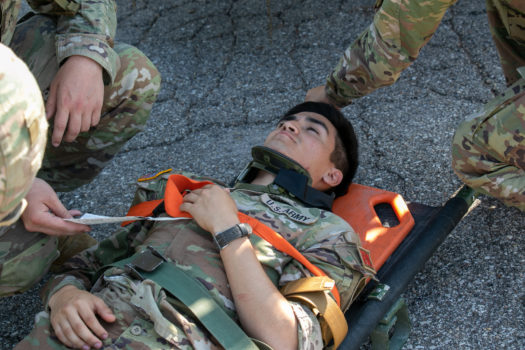FORT KNOX, Ky. – As the beginning of Cadet Summer Training (CST) has finally arrived, Army personnel and Fort Knox first responders group together to conduct their annual casualty evacuation (CASEVAC) exercise at Fort Knox, Ky. May 31, 2023.

This event is meant to prepare for any incidents that may occur during CST. Preparation like this allows for all aspects of the medical staff on base to be on the same page for any accidents Cadets may go through during Advanced Camp or Basic Camp.
Lt. Col. Tiffany Bilderback, the Battalion Commander of the 61st Multifunctional Medical Battalion. Her unit functions as the medical task force for all CST operations.
“It is paramount that we do this because it allows us to exercise all the different nodes that go into [an event where CASEVAC is necessary],” Bilderback said. “There are several players that are key in medical coverage for Fort Knox, and this allows us to work out the communication kinks to talk about who’s in charge, triage to happen, and all of those different parts of the response to be utilized.”
CASEVAC training is essential to the success of the Army, as it may be the determining factor on the ability to save lives in a critical situation. Every year new Cadre come in and offer their expertise during CST, many of which are brand new to Fort Knox.

Staff Sgt. Jared Tyer, a Human Resources Specialist, working his first year with Cadet Command, is currently an ROTC instructor at Alabama A&M University.
“Realistic expectation is part of all military training, whether you are combat or combat support,” Tyer said. “A casualty evacuation doesn’t have to be in a combat situation.”
In this specific exercise the volunteering Cadre and first responders dealt with the aftermath of a collision between two vehicles, where they had to simulate escorting casualties out safely and effectively.
“Everyone knows their job, but not everyone knows how to work together when you don’t do events like these often,” Tyer said.
This process takes a team effort, heavily relying on logistics and communication. With the CASEVAC coming to a conclusion, the Fort Knox medical staff has now had a taste of what a CST related emergency might look like.




